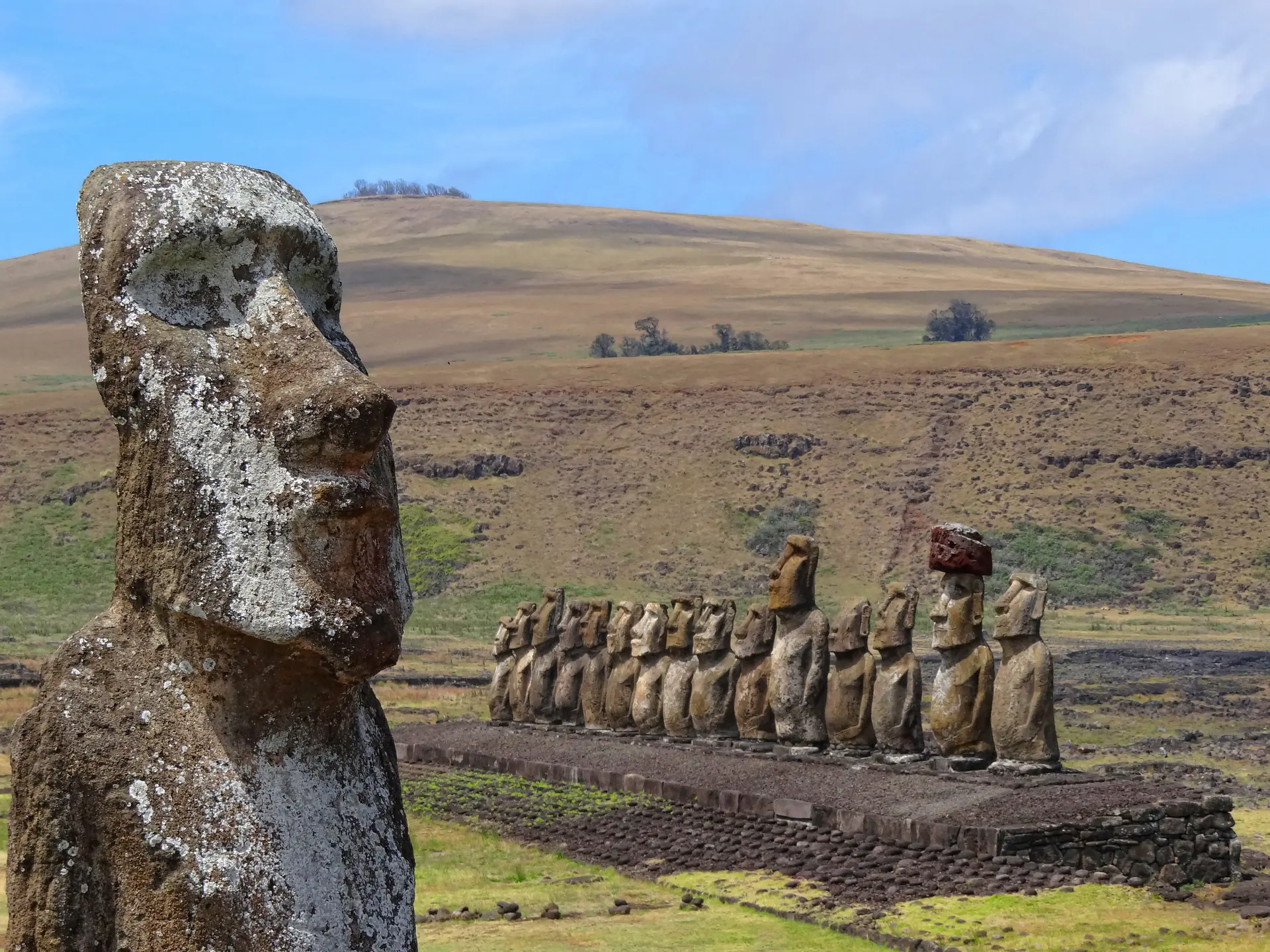
Rapa Nui's Mysterious Moai Statues Guard Easter Island
Discover the Polynesian Masterpiece in the Remote Pacific's Heart
About This Site
Rapa Nui National Park on Easter Island preserves the most extraordinary collection of monumental moai statues in Polynesia, where nearly 1,000 ancient stone guardians stand across the remote Pacific landscape. This remarkable UNESCO World Heritage site represents the unique cultural achievement of the indigenous Rapa Nui people who flourished in complete isolation for centuries on one of Earth's most distant inhabited lands. The mysterious moai statues, carved from volcanic tuff and transported across rugged terrain using ingenious ancient engineering techniques, continue to fascinate archaeological researchers and cultural heritage enthusiasts worldwide whilst protecting this fragile island ecosystem and its remarkable archaeological legacy.
Why It Matters
The moai statues represent a unique Polynesian cultural achievement on one of Earth's most remote inhabited islands in the Pacific Ocean. These monumental sculptures demonstrate remarkable ancient engineering and artistic mastery by the Rapa Nui people, creating an unparalleled archaeological legacy that continues to fascinate researchers worldwide.
Moai and Ancient Mysteries
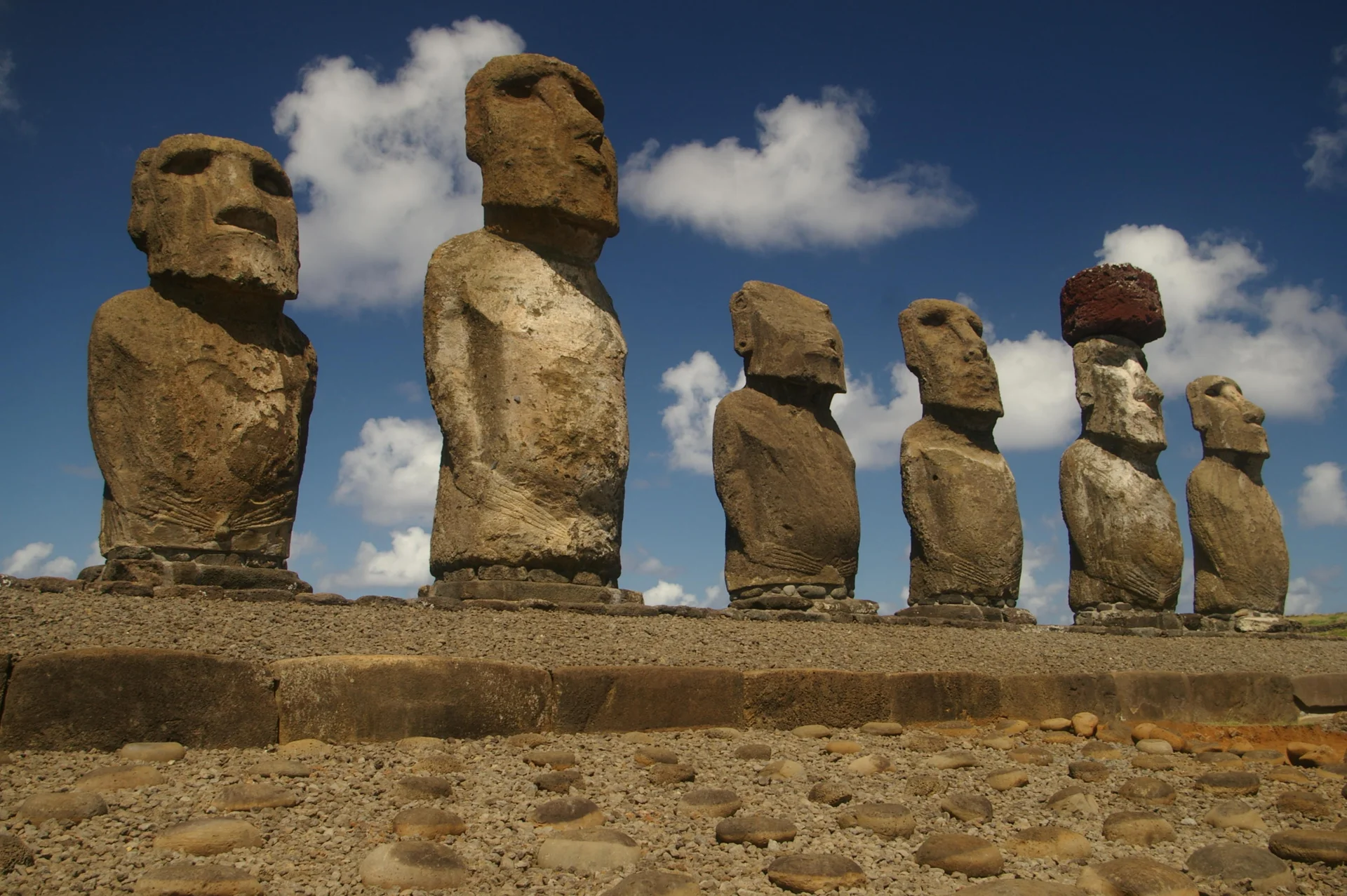
Ahu Tongariki Moai Complex
The largest ceremonial platform on Easter Island features fifteen meticulously restored moai statues standing in magnificent formation. These massive stone guardians, each weighing several tonnes, represent the pinnacle of Rapa Nui sculptural achievement. The restoration, completed in the 1990s with Japanese assistance, returned these fallen giants to their original positions facing inland to protect the island's inhabitants. At sunrise, the moai create dramatic silhouettes against the Pacific dawn, offering visitors one of archaeology's most spectacular sights. The platform itself demonstrates sophisticated ancient engineering, with precisely fitted volcanic stones supporting the massive statues.
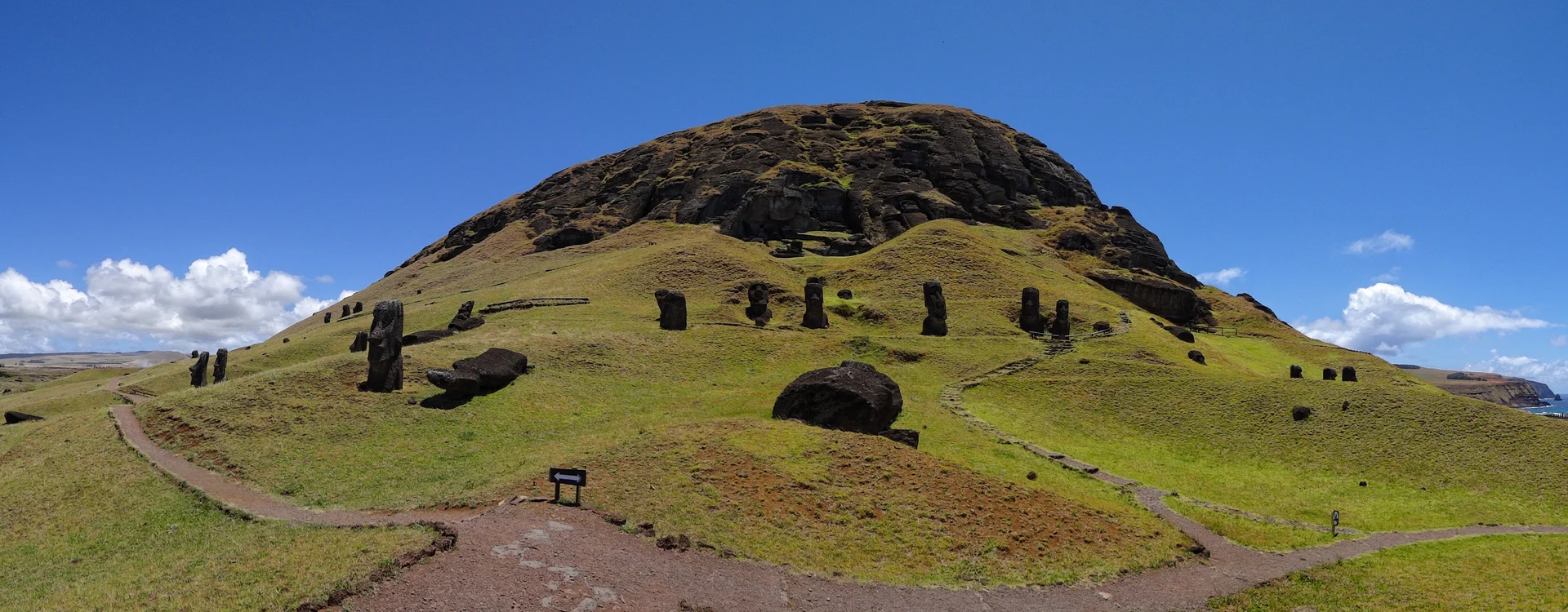
Rano Raraku Moai Quarry
The volcanic quarry of Rano Raraku serves as an extraordinary outdoor museum containing 394 moai statues in various stages of completion, offering unparalleled insights into ancient Rapa Nui sculptural techniques. This sacred site functioned as both the primary carving workshop and a temporary staging area where completed moai awaited transportation to their final ceremonial platforms around the island. Many statues appear buried up to their necks, but archaeological excavations reveal complete bodies extending deep underground, preserved by centuries of soil accumulation. The quarry demonstrates the sophisticated logistics of moai production, from initial carving through the mysterious transportation methods that moved these massive sculptures across the island's rugged terrain.
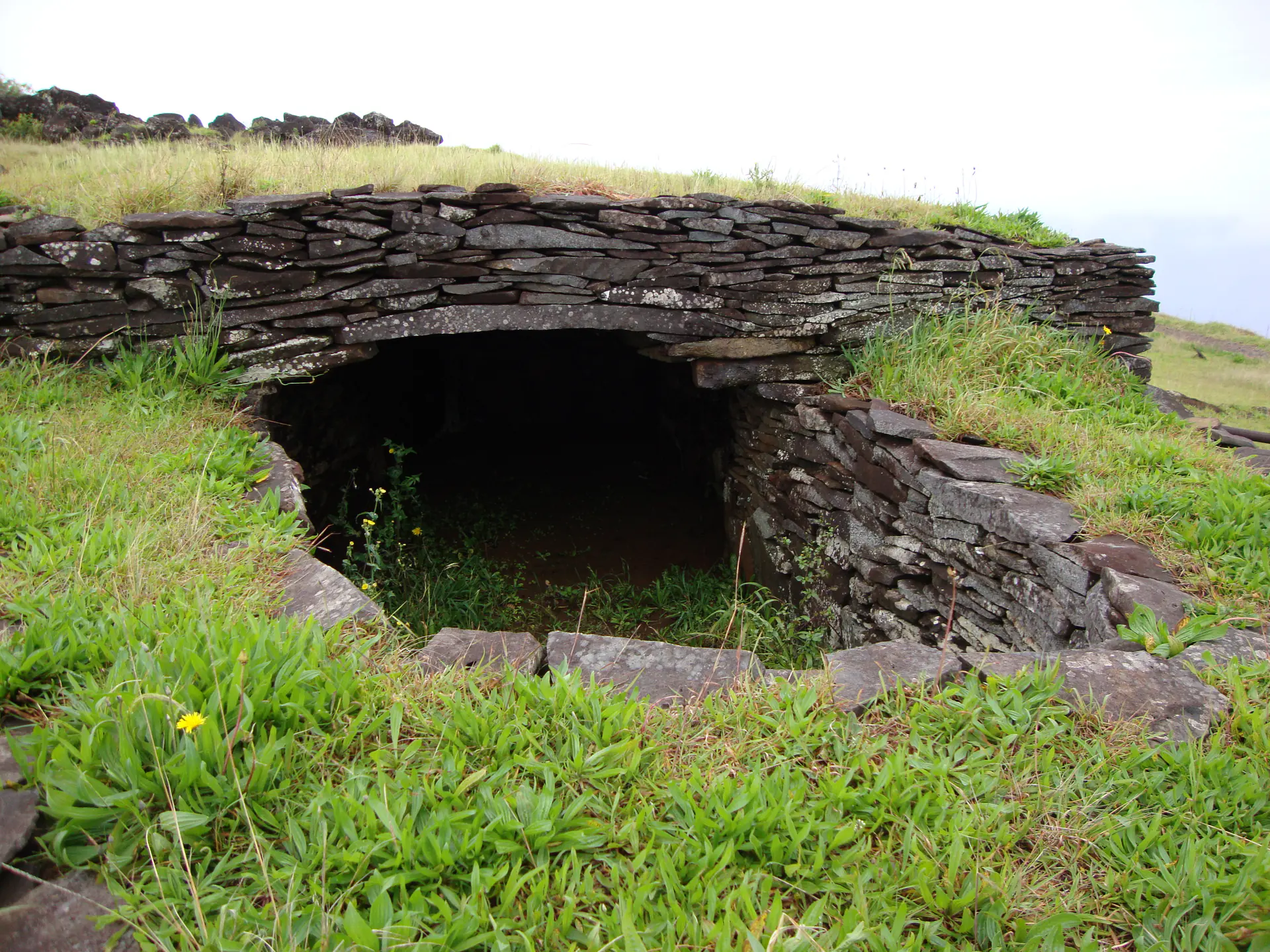
Orongo Ceremonial Village and Birdman Cult
Perched dramatically on the rim of Rano Kau crater, Orongo ceremonial village represents the fascinating Tangata Manu (Birdman) cult that dominated later Rapa Nui religious practices from approximately 1500 to 1888. This unique site features 53 stone houses with distinctive corbelled roofs, built without mortar using precisely fitted volcanic slabs. The village served as the annual gathering place for the Birdman competition, where young men swam to offshore Motu Nui islet to collect the first sooty tern egg of the season. The winner's sponsor became the year's spiritual leader, demonstrating how this remote Pacific culture adapted ancient traditions to changing environmental and social pressures. Petroglyphs throughout the site depict birdmen figures and ceremonial imagery.
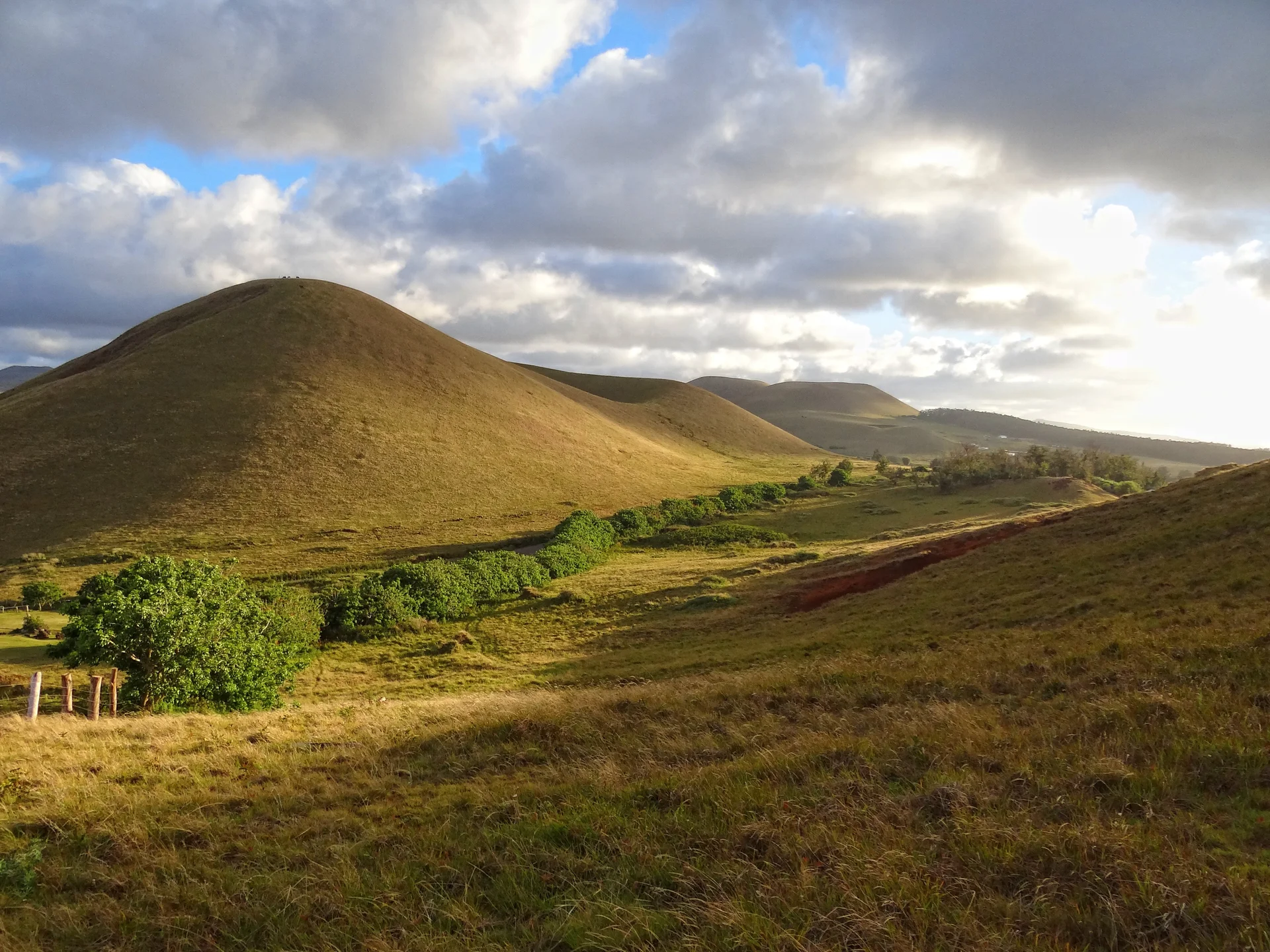
Rapa Nui Cultural Landscape
The island's rolling grasslands create a dramatic backdrop for scattered moai and archaeological sites, representing one of the world's most isolated cultural landscapes. The treeless terrain, shaped by Polynesian settlement and European contact, supports endemic flora and provides grazing for wild horses descended from those introduced in the 19th century. This unique environment showcases how the Rapa Nui people adapted their monumental architecture to the island's volcanic topography, creating sacred spaces that harmoniously blend with the natural landscape. The interplay between cultural monuments and natural setting demonstrates the sophisticated relationship between the Rapa Nui civilisation and their environment.
Location & Planning
Access via LATAM flights from Santiago (5.5 hours) or Tahiti (5 hours), booking essential months ahead. Entry permits purchased on arrival. Hire car or organised tours recommended. Book accommodation in advance.
Loading map...
Frequently Asked Questions
Rapa Nui (Easter Island) is a remote Pacific island famous for nearly 1,000 moai statues carved by ancient Polynesians. This UNESCO site demonstrates remarkable engineering and artistic achievement in one of Earth's most isolated inhabited locations, 3,700 kilometres from Chile.
The Rapa Nui people carved moai between 1250-1500 CE to represent ancestral protection. These massive stone sculptures were transported from Rano Raraku quarry to ceremonial platforms using ingenious rope techniques that "walked" the 80-tonne statues upright across rugged terrain.
LATAM Airlines operates the only commercial flights to Mataveri Airport from Santiago, Chile (5.5 hours) and Tahiti (5 hours). Due to extreme remoteness, flights run several times weekly. Book 3-6 months in advance, especially for peak season December-March.
December to March offers warmest weather and optimal sunrise lighting at Ahu Tongariki. April to November provides cooler temperatures and fewer crowds for comfortable exploration, though weather can be more variable in this remote Pacific location.
Entry permits (US$80) purchased on arrival at airport. National Park tickets (US$80) required for archaeological sites, valid 10 days. Book accommodation and transport in advance due to limited options on remote island. Hire car or organised tours recommended.
Pack comprehensive sun protection for intense Pacific UV, comfortable walking shoes for volcanic terrain, layers for variable weather, and reef-safe sunscreen. Bring essential medications as medical facilities limited. Respect 3-metre distance from moai statues as required by conservation protocols.
The Birdman cult replaced moai worship around 1500 CE, centred at Orongo village on Rano Kau crater rim. Annual competitions involved swimming to Motu Nui islet to collect the first sooty tern egg, with winners becoming spiritual leaders.
UNESCO World Heritage Criteria
Inscribed in 1995, this site meets 3 of UNESCO's 10 criteria for Outstanding Universal Value
Criterion (i): Masterpiece of human creative genius
Rapa Nui represents a masterpiece of human creative genius through the extraordinary moai sculptures carved from volcanic tuff, innovative engineering transporting multi-tonne statues across the island using sophisticated techniques, and distinctive rongorongo script representing one of world's few independently developed writing systems.
Criterion (iii): Testimony to cultural tradition
The island provides unique testimony to Polynesian culture's easternmost expansion, representing the Rapa Nui civilisation's remarkable achievements and subsequent societal transformation through monumental architecture, ancestor worship traditions, and the mysterious collapse that left hundreds of moai abandoned across the volcanic landscape.
Criterion (v): Outstanding traditional human settlement
Rapa Nui exemplifies an outstanding traditional human settlement demonstrating sustainable land use disrupted by environmental degradation, representing how isolated island communities interact with limited resources, whilst the moai platforms (ahu) preserve exceptional evidence of ceremonial landscape organisation vulnerable to environmental and social pressures.
Historical Context
Polynesian Settlement (1200-1500 CE)
Polynesian navigators arrived on the remote island around 1200 CE, developing the unique Rapa Nui culture in isolation. They began constructing monumental moai statues representing ancestral protection and spiritual authority, establishing ceremonial platforms across the landscape.
European Contact (1722-1888)
Dutch explorer Jacob Roggeveen arrived on Easter Sunday 1722, naming the island. Subsequent European contact brought devastating diseases, slave raids, and cultural disruption, causing catastrophic population decline from approximately 15,000 to just over 100 inhabitants by the 1870s.
Chilean Annexation (1888-present)
Chile formally annexed Easter Island in 1888, incorporating it into national territory. Rapa Nui National Park was established in 1935 to protect archaeological sites. UNESCO designated the island as World Heritage in 1995, recognising its outstanding universal cultural value.
Conservation & Protection
Current Conservation Status
Protected as Chilean national park with comprehensive UNESCO World Heritage oversight, carefully balancing archaeological preservation with sustainable tourism development and indigenous Rapa Nui cultural rights.
Conservation Challenges
- Extreme remote Pacific location making conservation efforts logistically challenging and prohibitively expensive for regular maintenance
- Increasing tourism pressure requiring strict visitor limits to protect fragile archaeological sites from damage
- Climate change and rising sea levels threatening vulnerable coastal archaeological remains and ceremonial platforms
- Soil erosion and environmental degradation from historical deforestation affecting moai stability and island ecosystem health
Active Conservation Efforts
- Comprehensive moai restoration programmes combining traditional Rapa Nui methods with cutting-edge modern conservation techniques for sustainable preservation
- Community-based tourism initiatives supporting local Rapa Nui economic development while preserving cultural authenticity and archaeological integrity
- International archaeological partnerships with leading universities advancing innovative research methodologies and preservation techniques for remote heritage sites
- Environmental restoration projects including native plant reintroduction and soil stabilisation programmes protecting archaeological sites from erosion damage
Image & Content Attribution
Research & Content Sources
Photography & Visual Media
Last updated: 11 October 2025